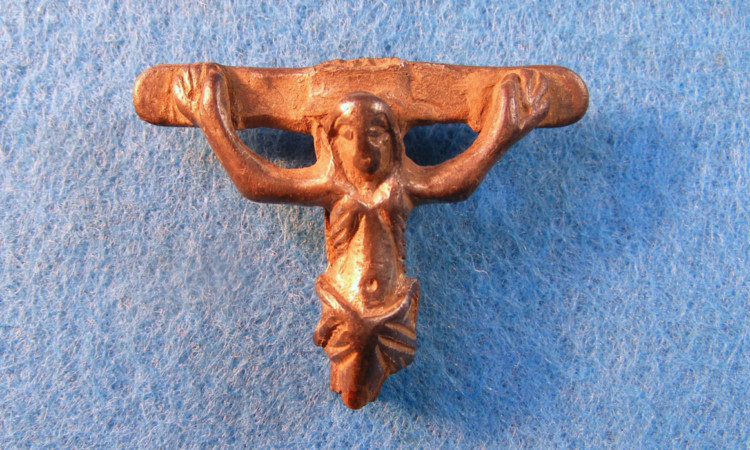A rare medieval crucifix is to be housed at Perth Museum after being found near Loch Leven.
The silver jewellery bears an inscription which experts believe could be a spell to prevent the wearer suffering a violent death.
It also shows a standard medieval depiction of Christ on the cross and the rear face is decorated with a large blue glass stone intended to resemble sapphire.
To the medieval mind, sapphires were popularly believed to bestow magical attributes on the wearer, and the cross has been designed so the stone would be in contact with the wearer.
Around the gem are the remains of an inscription, which originally read: “Ihesus Nazrenus Rex Ioudoreum” meaning Jesus of Nazareth, King of the Jews which was commonly believed to function as a form of magical spell to protect the wearer.
The crucifix was awarded to the Fair City by Treasure Trove Scotland (TTS), which decides if finds are of national importance.
A spokesman for the organisation said: “Surviving medieval crucifixes are rare finds and this one particularly so as it has some very unusual features.
“What makes this a really interesting find is what it can tell us about a particular individual and their beliefs as this would have been an object commissioned by the person who wore it, and it was obviously important to them to combine these magical or protective elements in the one object.
“What is does illustrate is that people saw this protective magic as something very real, which may seem odd to us, but it was an important part of medieval beliefs, to the extent that they would spend what would have been a significant sum of money to have such an object created for them.”
The find was announced as part of TTS’s annual report, which has been presented to the Scottish Parliament.
The report covers the period April 1 2013 to March 31 2014 and comments on Treasure Trove matters dealt with by the Queen’s and Lord Treasurer’s Remembrancer and by the Scottish Archaeological Finds Allocation Panel.
